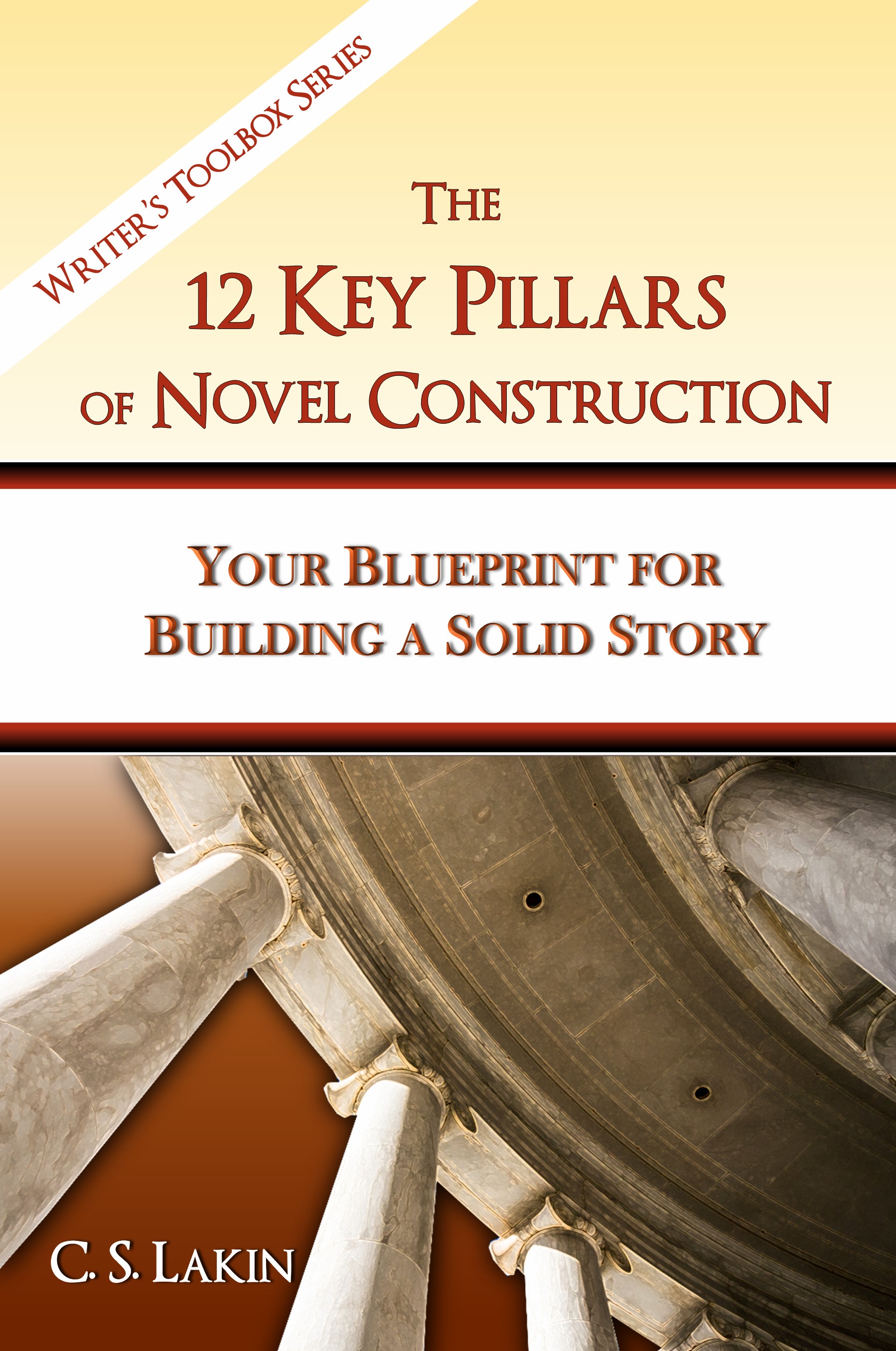
The 12 Key Pillars of Novel Construction takes the mystery out of building a solid story and shows you how to go from idea to complete novel in practical, easy-to-understand steps.
Build smart!
Over and over, struggling writers make the same fatal mistakes in their manuscripts. Even writers who have studied all the best writing craft books and taken workshops and followed writers’ blogs still don’t get the structure.
Truth is, a lot of writers believe they can write a novel without taking time to learn the nuts and bolts of novel construction. Just as with building a house, writers need to adeptly wield the proper tools and materials, and follow structurally sound rules if they hope to “build a novel.”
Build strong!
Smart writers will take the time to learn how to structure strong pillars that will hold up their novels. This new comprehensive writing craft book clearly lays out just how to build each essential pillar so it can carry the weight of your story. Without such foundational support, collapse is inevitable.
There are 12 key pillars of novel construction, and if any of these pillars is weak, made of faulty materials, it will compromise the integrity of your novel.
Build a novel that will stand up to scrutiny and thrill readers!
Inside, you’ll learn:
In addition, you’ll get 12 comprehensive “inspection checklists,” each with 12 sets of deep, thought-provoking questions meant to ensure your pillars are truly strong enough to hold the weight of your story. You need to pass every inspection!
Don’t waste time trying to guess at novel structure. By using this concise, detailed blueprint, you can be sure you’ll end up with a terrific novel—every time!
The 12 Key Pillars of Novel Construction is part of The Writer's Toolbox Series of writing craft books for novelists. Be sure to get all of the books so you'll have your toolbox filled to the brim with the tools you need to write novels that readers will rave about!
Genre: LANGUAGE ARTS & DISCIPLINES / AuthorshipThis book just released March 1, 2015 and already has great reviews and mostly five-star rankings on Amazon. It's part of the Writer's Toolbox Series (the fourth book), and this series sells well. This is a comprehensive and in-depth guide to help writers understand all the fundamentals of constructing a novel, and applies to any fiction genre.
Chapter 1: Building Construction 101
Imagine your novel as a house. Or more like an ancient Greek building, such as the Parthenon. Made completely of marble, heavy marble—including the massive roof. Then imagine how strong those columns have to be to support such a gargantuan weight. One replacement column recently installed on the Parthenon weighed in at around fifty tons! Although no one has ever weighed the entire Parthenon, architects state that just the cast iron that supports the dome of the US Capitol building in Washington, DC, has been estimated at around 8.9 million pounds. It’s hard to believe any structure made of any materials could hold up such weight.
But these buildings have remained standing through centuries, without collapsing, which attests to the strength and reliability of the materials used in these structures—as well as the brilliance of the architects who designed them.
Novelists are architects too—architects of story. Just as a level, appropriate, and rock-solid foundation is needed as a base to any lasting building, a writer must have a similarly strong and informed foundation in order to write strong novels. Upon such a foundation a great novel can be built. But as much as the right foundation is essential, the structural integrity of the entire project must be exact or the “building” will collapse.
So if we liken the completed novel to the roof—the very heavy marble roof—then consider the pillars supporting the roof as the key to success. We want “fifty-ton” columns to support our roof so it will not only look sturdy but also stand the test of time.
| Language | Status |
|---|---|
|
French
|
Already translated.
Translated by Alison Feucherolles
|
|
Portuguese
|
Already translated.
Translated by Sátia Marini
|
|
Spanish
|
Already translated.
Translated by Horacio Salazar
|